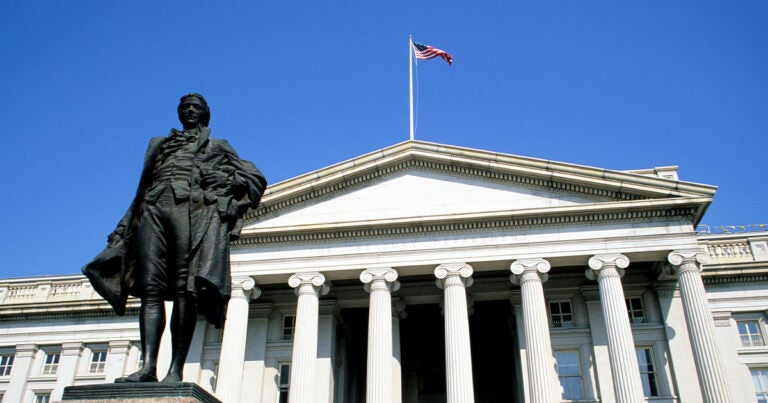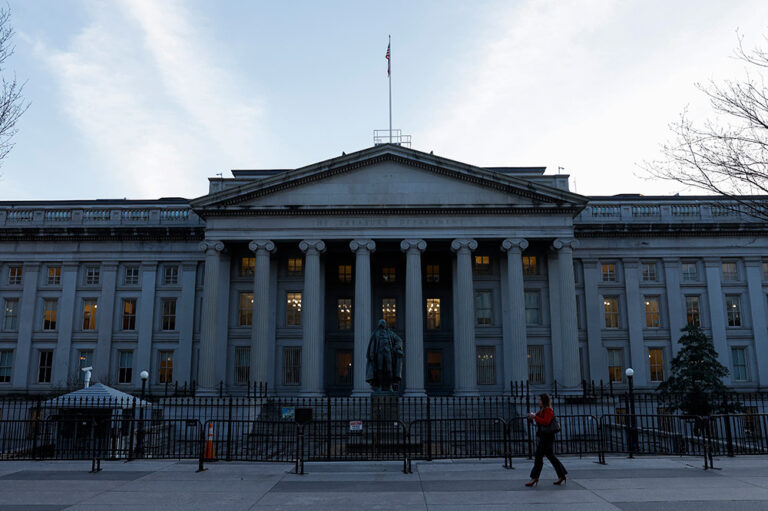Top Economists Weigh in on Rising Inflation, Growing Debt, and America’s Economic Future
In 2022, America faces key questions about rising inflation, new COVID variants, growing national debt and an uncertain economic recovery. To help shed light on a complex set of factors and indicators, the Peterson Foundation brought together two leading experts for the latest edition of the Economic Forum.
James Poterba, President and CEO of National Bureau of Economic Research, and Diane Swonk, Chief Economist of Grant Thornton, covered a range of timely issues, including breaking news on 7% inflation, the omicron variant, labor market trends, America’s unsustainable debt outlook and what actions the Federal Reserve might take this year.
Inflation and the Economy’s “Seesaw Pattern”
Poterba and Swonk assessed the causes and effects of rising inflation — which rose 7% over the past year, the highest since 1982 — offering their views on when prices might moderate, and what factors will be important to watch.
Swonk saw a good chance for inflation moderation in 2022, but cautioned,
“Will it cool enough to not distort decisions? Right now, it doesn’t look like it will, even with a hard stop and then the economy re-starting up again in the next quarter. I am very worried about this seesaw pattern. It’s a stop-and-go that adds friction and with that friction is inflation, which over time is something we’ve not had to deal with when it comes to deficits.”
Poterba said that it is unclear how much longer rising inflation will last, suggesting it could endure a few more months or last through the second half of 2022. Aside from inflation factors like global transportation, supply-chain and workforce issues, as well as central bank interest rate and balance sheet decisions, he highlighted a perception problem that can prolong widespread inflation.
“The risk right now, and it’s very hard to know how to gauge this, is that businesses begin to think that they can increase their prices because the customers will not think it’s out of line to do that,” he said. “That changes the psychology of how a lot of things that consumers are facing will start to look.”
Both economists raised concerns about inflation happening more broadly across various economic sectors than expected earlier in the pandemic.
“The core inflation is becoming more broad-based between both services and goods,” Swonk said. “Particularly in the shelter sector, where I think we’ll easily see, especially with relation to home ownership costs, inflation that will likely touch the peak if not exceed the peak we saw during the height of the housing bubble. That is really disturbing, and that’s something the Fed can do something about. That is something that’s more persistent and I think will linger.”
Federal Reserve and Monetary Policy Developments
With Federal Reserve Chairman Jerome Powell indicating Tuesday that a mix of interest rate hikes and tighter monetary policy will be used to try to curb inflation, the experts said they will watch closely how the bond market reacts in order to assess broader inflationary, economic, and fiscal impacts.
“The Fed has remarkably adjusted from where it was a few months ago, and updated the weight being placed on the risks of inflation,” Poterba said. “The policy of stimulus through monetary policy that we have been working with is now going to start to run in the opposite direction.”
“I do worry about where we are now that the Fed has pivoted from a position — which has huge implications for our fiscal sustainability — from being patient in record time to being panicked about inflation,” Swonk said.
Swonk said she expects the Fed to increase rates three times this year, starting in March, along with aggressive tapering of their balance sheet.
“I know that they could do more. I think the speed at which they want to reduce their balance sheet is pretty remarkable — you’re talking about $100 billion a month or more,” she said. “Developing economies have taken a record amount of debt, and that debt is held on their commercial bank balance sheets. Anything the Fed does as the central bank of the world, developing economies have to match those increases or outpace them. You’ve got that spillover and knockoff effects that could come back to our own shores, and that’s something the Fed is very cognizant of.”
Omicron Impact
Among the many uncertainties surrounding the omicron variant, the economists will be analyzing whether it will be as inflationary as Delta.
“It will be really interesting to see what role omicron has, in terms of is it as inflationary,” Swonk said. “The Fed has decided variants are more inflationary than disinflationary, because of their disruption to the supply chain at the same time demand is strong.”
In considering omicron’s effect on economic growth and recovery, Poterba and Swonk also looked at the decline in workforce participation.
“We’ve had an extraordinary year in managing during a time of significant pandemic activity to get economic growth back on track,” Poterba said, noting labor shortages due to fears of COVID; a lack of reliable childcare and school openings; household budgets cushioned by federal pandemic relief; and older workers in the aging population deciding not to return to work.
“Now, acute labor shortages basically mimic a mandated lockdown, only it’s much messier,” Swonk said. “We’re seeing it hit essential services across the board.”
Unsustainable Federal Debt and Interest Costs
With $5.5 trillion added to the national debt since the start of the pandemic, profound structural budget deficits, and interest costs being the fastest growing budget category over the long term, Poterba and Swonk expressed deep concerns about America’s fiscal outlook. Both noted that the existing structural deficits that existed before COVID present ongoing risks and challenges.
“We are in a structural imbalance between spending and revenue at the federal level,” Poterba said. “The more immediate concern, is that if something happens and real rates rise significantly, then the burden of having 100% debt-to-GDP ratio is significantly greater. It is possible, because we start with this condition now of the last couple of years having added this additional bit of debt that we run the risk that if an interest rate shock in the positive direction comes along, the impact on federal finances and the economy could be larger.”
Poterba said that an interest rate increase of a hundred basis points on federal debt would add approximately 1% of GDP in additional federal interest outlays.
The pair offered avenues to start addressing root causes of the unsustainable budget outlook now.
Swonk calls for a greater portion of federal outlays to be investments in the future, including education, as well as addressing the declining labor force, demographic issues, low immigration, and economic inequality.
“The potential growth over longer haul that can support these debts and deficits is also diminishing, and that’s something that gets lost in translation as we’re in a boom economy,” she said. “We spend $6 for every old person versus $1 on children in this country. We’re not investing at all in our future at the time when we have just really dealt a very heavy blow to educational attainment.”
As part of addressing the overall fiscal challenge, Poterba urged action on key programs like Social Security, which is projected to face funding shortfalls as soon as 2034.
“The sooner we recognize this long-term fiscal imbalance and try to do something about it, the smaller the changes we’ll need to make in order to get back onto a fiscal path that does not involve a continuous increase in the debt-to-GDP ratio,” Poterba concluded. “There are many levers that can be used to shore it Social Security’s finances, and the longer we wait, the more we’re going to have to pull on whichever levers we choose to use.”
Image credit: Getty Images
Further Reading
The Fed Reduced the Short-Term Rate Again, but Interest Costs Remain High
High interest rates on U.S. Treasury securities increase the federal government’s borrowing costs.
What Types of Securities Does the Treasury Issue?
Let’s take a closer look at a few key characteristics of Treasury borrowing that can affect its budgetary cost.
Quarterly Treasury Refunding Statement: Borrowing Up Year Over Year
Key highlights from the most recent Quarterly Refunding include an increase in anticipated borrowing of $158 billion compared to the same period in the previous year.


